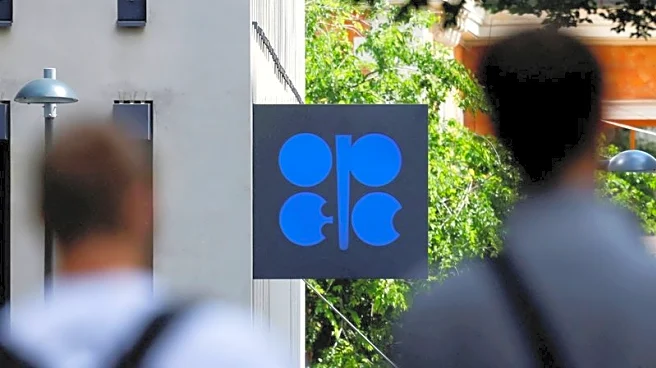What's Happening?
Oil prices remained stable as OPEC+ decided to maintain its current output levels, pausing any increases in the first quarter of 2026. This decision comes amidst ongoing U.S. sanctions on Russian oil producers
Rosneft and Lukoil, and recent attacks on Russian energy infrastructure. A Ukrainian drone attack recently targeted Tuapse, a key Russian Black Sea oil port, causing significant damage. Despite these challenges, Morgan Stanley has adjusted its Brent crude forecast for the first half of 2026 to $60 a barrel, reflecting the impact of OPEC+'s decision and the sanctions on Russian oil assets. The International Energy Agency has projected a potential surplus in the global oil market next year, while OPEC anticipates a balance in supply and demand.
Why It's Important?
The decision by OPEC+ to pause output increases is significant as it reflects the group's strategy to stabilize oil prices amidst geopolitical tensions and market uncertainties. The sanctions on Russian oil producers and the recent attacks on infrastructure highlight the volatility in the global oil supply chain. This situation affects global oil prices and has implications for energy security, particularly in regions heavily reliant on Russian oil. The potential surplus in the oil market could lead to lower prices, impacting oil-dependent economies and industries. Conversely, the stability in prices could benefit consumers and industries reliant on oil, providing a buffer against inflationary pressures.
What's Next?
OPEC+ will likely continue to monitor the global oil market closely, adjusting its strategies to maintain price stability. The ongoing geopolitical tensions, particularly involving Russia, will be a critical factor influencing future decisions. Stakeholders, including governments and energy companies, will need to navigate these uncertainties, potentially seeking alternative energy sources or adjusting their production strategies. The market will also watch for any further sanctions or geopolitical developments that could impact supply and demand dynamics.












